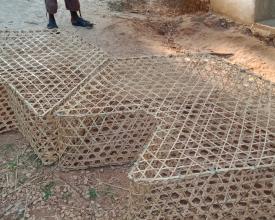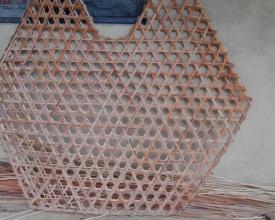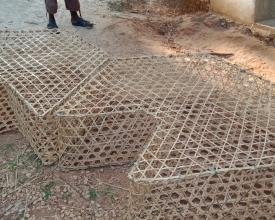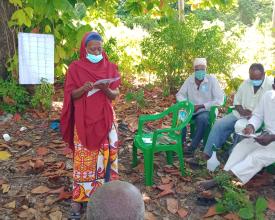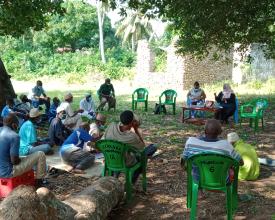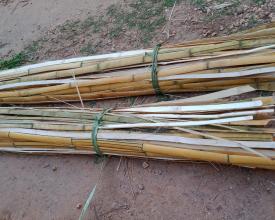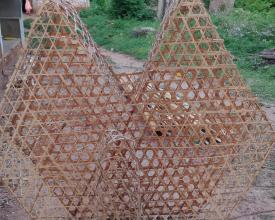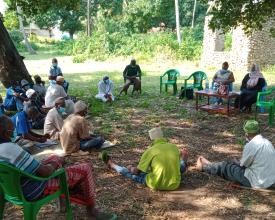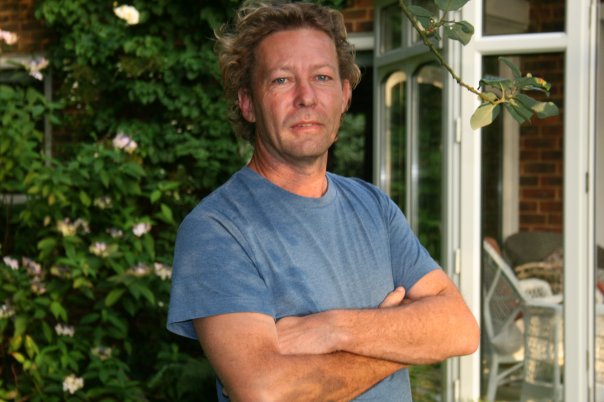
Sustainable basket trap fishing:Uptake of modified basket traps in Mkungunii fishing area,South Coast Kenya
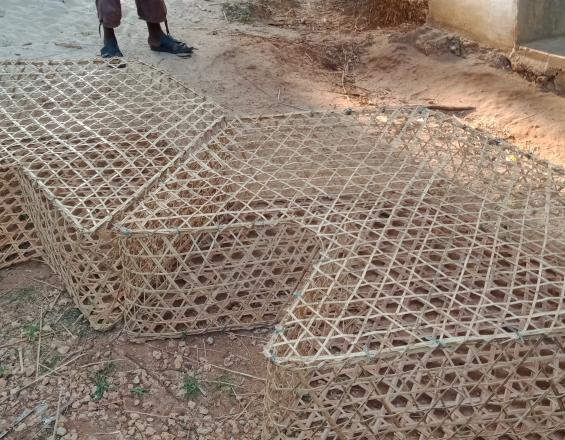
Mkunguni Beach Management Unit (BMU) is in Msambweni sub-county of Kwale county, Southern coast of Kenya. Artisanal fishing is the main economic activity in Mkunguni co-management area and illegal fishing practices are restricted by the BMU. The fishers use rudimentary fishing vessels and traditional fishing gears. The artisanal gears in use, including basket traps locally known as “malema”, catch high proportions of juveniles of both target and non-target species, affecting the sustainability of the fishery and livelihoods of the local community. Basket traps, are the most prevalent fishing gears used in the area.
To address this, the traditional 2.5-inch basket traps were modified to 3-inch mesh sizes and trialed with a few basket trap fishers in Mkunguni fishing area. Use of modified basket traps reduced the capture of juveniles of target species, increased the catch rates and consequently the income of the fishers.
Context
Challenges addressed
Like most coastal areas, Mkunguni community is heavily dependent on inshore fishing. The fishery faces degradation of marine habitats and depletion of fish stocks due to use of destructive and illegal gears, overfishing, lack of modern fishing vessels to access offshore areas, and negative impacts of climate change which reduces fish catch and consequently the income of fishers. Use of modified basket traps was identified as a solution to reduce the use of unsustainable gears that catch high proportions of juveniles of target and non-target species and increase the income for the fishers. Getting the basket traps fishers to participate in the trial was a challenge owing to the perceived possible decrease in catches by using basket traps of larger mesh size. A participatory approach was employed to bring on board fishers, relevant local leaders and lead institutions, in co-designing the basket trap intervention.
Location
Process
Summary of the process
Inclusivity of all players during an intervention is a critical aspect to consider. The design of the project targeted modification of the existing gears was a way of incorporating traditional indigenous knowledge to the perpetual challenge of juvenile capture. The trial phase enhanced understanding of the impacts of the different basket trap mesh sizes on ecosystem and fish catch. Participation helped establish an element of sustainability and ownership. Benefits accrued from the interventions financially, surpassing the initial capital for both trials and uptake.
Building Blocks
Trial and upscale of modified basket traps
We conducted a series of awareness and sensitization meetings with the basket traps fishers and the community on impacts of destructive fishing gears on ecosystems and livelihoods. The recommendation was to modify the traditional basket traps from 2-3 inches mesh sizes. We co-designed the traps with the volunteer fishers prior to the trials. Sixteen fishers volunteered to trial the modified traps. Trained fishers and other community members collected fish data throughout the trial. We used the data to evaluate the catch composition, size structure of fish captured, juvenile retention, catch per unit effort (CPUE) and fishers’ income. From the data, modified traps were considered beneficial economically and ecologically, and all the basket traps fishers expressed interest in starting using them. This led to the upscale phase where the fishers were facilitated to construct the modified basket traps.
Enabling factors
- Sensitization and awareness programs
- Building on participatory research
- Capacity building in construction of basket traps
- Use of local traditional knowledge in gear construction
Lesson learned
- Community-based conservation initiatives must involve the community actively in planning, designing, execution, and discussions on progress.
- It's important to educate the local population about the effects of unsustainable fishing methods.
- Making the fishers construct the traps was an assurance of traps of good quality.
- When beneficiaries understand the issues, are involved in creating solutions, and gathering data to show if the suggested remedy is effective, recommended interventions are more readily accepted.
Resources
Sustainable financing
We resolved the challenge of financial limitations by encouraging the fishers to join saving groups. The fishermen have formed Village Savings and Loans Associations (VSLAs) with the aim of saving part of their income and access loans with ease. We trained the groups on how to run the VSLA, also known as table banking, as well as on financial management and group dynamics and provided them with the required inputs such as record keeping books. The VSLA members hold weekly meetings, where they contribute savings and those who need loans requesting for them, clearly stating mode of repayment, use of the loan and repayment period. The fishermen are now able to cater for their daily needs during the Southeast Monsoon (SEM) season when there is no fishing due to the rough weather conditions. They spend time constructing and repairing the basket traps in preparation for the high Northeast Monsoon (NEM) season where they can go out fishing.
Enabling factors
- The existence of a similar table banking within the Beach Management Unit (BMU) being done by women through UNEP funded project, was used as a good example as they had made significant and admirable progress. This motivated them to also form their table banking groups where they will be saving their income from fishing.
Lesson learned
- Most of the community members engaged in small medium enterprises require ease at accessing finances to not only meet their daily needs, but also grow bigger financially, as well as save more for the future. The members had not engaged in income savings scheme hence spent all their money without retaining some for the days with low or no earning.
Impacts
Ecological and economic benefits: Use of modified basket traps reduced the number of non-target species by 82.6%, increased the size of target fish captured by between 6.3% and 15.1%, reduced the number of juveniles individuals of dominant species by 23.7%, and increased the catch rate by 214.1%, and consequently the income to the fishers by 222.1%.
There has been a development of a savings culture among the fishermen who have formed Village Savings and Loan Associations (VSLA) creating financial sustainability. With the VSLAs, the fishers save part of their income and can access unrestricted loans which they use to cater for other basic needs such as school fees, constructing and repairing their houses, buying household items, and opening and expanding to other businesses. They are also covered during the low Southeast Monsoon (SEM) season when the sea is rough, and fishing is difficult.
Beneficiaries
Fishermen, women, fish traders and youth.
Sustainable Development Goals
Story
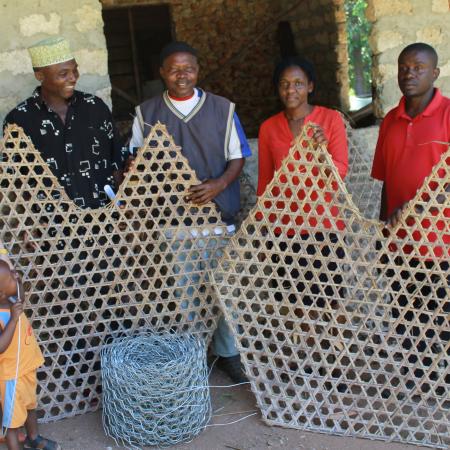
Fishing largely contributes towards the wellbeing of the local communities who depend on the resources for their livelihoods. Basket trap fishers have traditionally used small mesh-sized traps of below 2.5’ inches for fishing. However, these traps have been known to capture high proportion of juveniles contributing to overfishing. Hamza, aged 35 years, a basket trap fisherman in Mkunguni, says he has been fishing for over 20 years. Over the years, he has seen a decline in fish catch and rise of degraded habitats due to use of destructive fishing methods. He volunteered to participate in the modified basket traps trials and provided oversight during the construction of the modified basket traps. He pioneered in the formation of a VSLA group involving 70 basket traps fishermen and he is currently the chairperson to one of the groups. He says the group has helped him learn the importance of saving part of his income, and when need arises, he has easy access to unrestricted loans on his savings. By taking loans from the group, he has started other income generating activities like horticulture, which he does during the low Southeastern Monsoon (SEM) season when he is not fishing to ensure there is a constant flow of income. Other fishermen like Hamza have taken their children to better schools, expanded their businesses, completed construction and furnishing of their houses, and bought assets. This has been enabled by better income generated from fishing using modified basket traps and better savings culture by the fishermen. The fishermen being able to earn their livelihoods at the same time contributing to the conservation of the ecosystems have developed a sense of ownership and responsibility for the resources they are dependent on.
